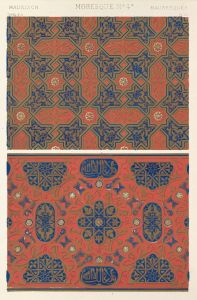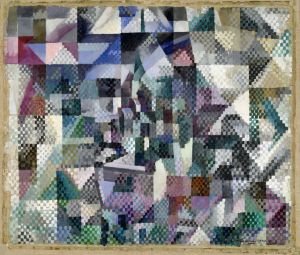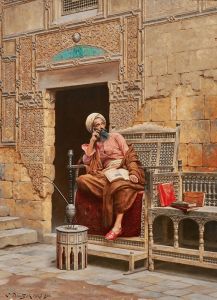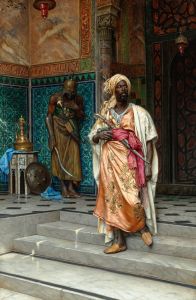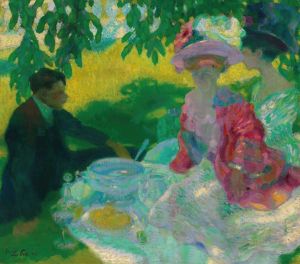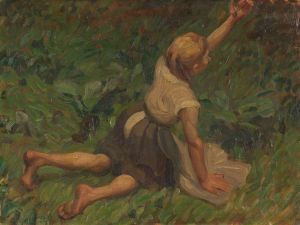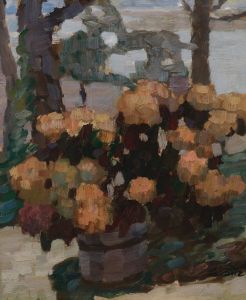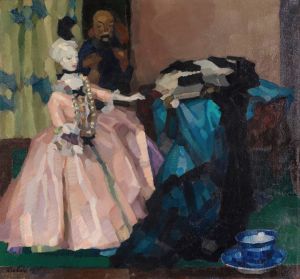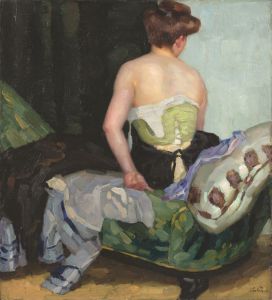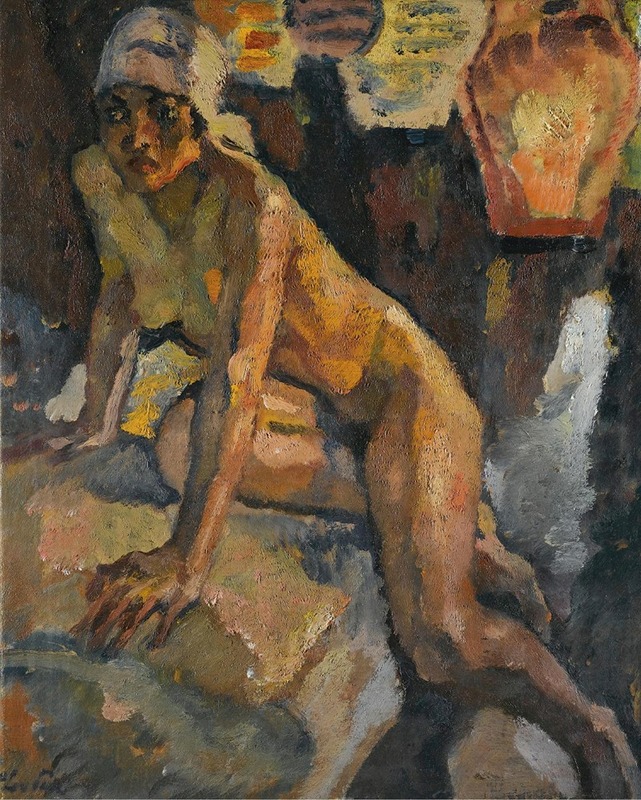
In the Seraglio
A hand-painted replica of Leo Putz’s masterpiece In the Seraglio, meticulously crafted by professional artists to capture the true essence of the original. Each piece is created with museum-quality canvas and rare mineral pigments, carefully painted by experienced artists with delicate brushstrokes and rich, layered colors to perfectly recreate the texture of the original artwork. Unlike machine-printed reproductions, this hand-painted version brings the painting to life, infused with the artist’s emotions and skill in every stroke. Whether for personal collection or home decoration, it instantly elevates the artistic atmosphere of any space.
Leo Putz was a prominent German painter known for his contributions to the Impressionist and Art Nouveau movements. Born in 1869 in Merano, which was then part of the Austro-Hungarian Empire, Putz developed a distinctive style characterized by vibrant colors and dynamic compositions. He studied at the Academy of Fine Arts in Munich and later became a member of the Munich Secession, a group of artists who sought to break away from traditional academic art.
"In the Seraglio" is one of Putz's notable works, reflecting his interest in exotic and Orientalist themes, which were popular among European artists in the late 19th and early 20th centuries. The term "seraglio" refers to the sequestered living quarters used by wives and concubines in an Ottoman household, often depicted in Western art as a place of opulence and mystery. This theme allowed artists like Putz to explore subjects of sensuality and luxury, often through a Western lens that romanticized Eastern cultures.
The painting showcases Putz's mastery of light and color, with a composition that draws the viewer into an intimate and richly detailed scene. His use of soft, flowing lines and a warm color palette creates a sense of harmony and elegance, typical of his work during this period. Putz's brushwork is both precise and expressive, capturing the textures of fabrics and the play of light on surfaces with remarkable skill.
Putz's work, including "In the Seraglio," often reflects the broader cultural and artistic trends of his time. The fascination with Orientalism in European art was part of a larger movement that included literature, music, and architecture. Artists were inspired by the perceived exoticism and otherness of Eastern cultures, often creating works that blended fantasy with elements of reality. While today this perspective is critiqued for its colonial and stereotypical views, it remains an important aspect of understanding the historical context of Putz's work.
Throughout his career, Putz exhibited widely and gained considerable recognition for his contributions to modern art. He was a professor at the Weimar Saxon-Grand Ducal Art School and influenced a generation of artists with his innovative techniques and approaches to painting. His works are held in various collections and continue to be studied for their artistic and historical significance.
"In the Seraglio" exemplifies Putz's ability to merge traditional subjects with modernist techniques, creating a work that is both timeless and reflective of its era. The painting remains a testament to Putz's skill as an artist and his ability to capture the imagination of his audience through evocative and beautifully rendered scenes.





